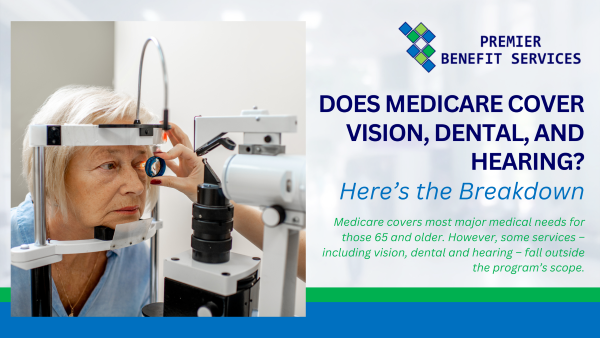Medicare Basics: The A, B, C, and D of Coverage

We’ve summarized the basics of Parts A, B, C, and D to help you understand how Medicare works.
Part A: Hospital Insurance
Part A helps cover inpatient care in hospitals, skilled nursing facility care, hospice care, and home health care.
Part A is sometimes called “premium-free Part A” because the premium in $0 if you have been working for at least 40 quarters or 10 years, and paying your Medicare taxes.
If you have health insurance from an employer, you only need to sign up for Medicare Part A. However, if the company you work for has less that 20 employees, you must also enroll in Part B.
Part B: Medical Insurance
Part B helps cover the costs of services from doctors and other health care providers, including outpatient care, home health care, durable medical equipment, and many preventive services like screenings, vaccines, and yearly wellness visits.
There is a monthly premium for Part B. The amount is based on your adjusted gross income and it can change from year to year. For 2025, the minimum monthly premium is $185 each.
The Part B deductible for 2025 is $250 for the calendar year.
If you did not sign up for Part B and are planning to retire, you will need to provide Social Security with a form completed by your company confirming that you are no longer covered under their health plan.
Part C: Medicare Managed Care Plan /Medicare Advantage
Part C – also known as a Medicare Managed Care Plan or Medicare Advantage Plan – offers an alternative to Original Medicare (Parts A and B). These plans are run by private insurance companies approved by Medicare.
Medicare Advantage Plans provide coverage for hospital stays and medical services.
You need to be enrolled in Medicare Part A and B to purchase a plan (Medicare Advantage plans do not replace Part A and B.)
Many plans offer additional benefits such as vision, hearing, dental, or wellness programs.
Medicare Advantage Plans differ in their costs, benefits, and network restrictions. Some have a $0 premium, others charge up to $150 a month. We advise clients that the key consideration in purchasing a plan is ensuring that your doctors are in the network.
Part D: Prescription Drug Coverage
Part D helps cover the costs of prescription medications. This optional coverage is administered by private insurance companies that contract with Medicare.
If you are enrolling in Original Medicare and/or a Supplement (Medi-Gap) Insurance plan, you will need to purchase a standalone Part D prescription drug plan at same time. Complete this step whether or not you are currently taking medication! Otherwise, you may have to pay a lifetime penalty should you need coverage down the road.
While there are some exceptions, most Medicare Advantage plans include a prescription drug plan.
We’ve explained the 2025 changes to Part D coverage in our March blog.
Get the answers and the coverage you need.
The Medicare landscape is constantly changing and so are your healthcare needs. Whether you are new to Medicare or exploring your plan options, working with an experienced Medicare agent can help you avoid confusion and – the frustration of not getting answers to your questions.
With over 20 years of experience, we promise you an honest conversation about how Medicare works and what coverage might be best for you. We are never too busy to take your call or help resolve your issues, and we never charge for our services. Call Bruce or Marcia at 973-628-0694 to schedule a complimentary consultation.










